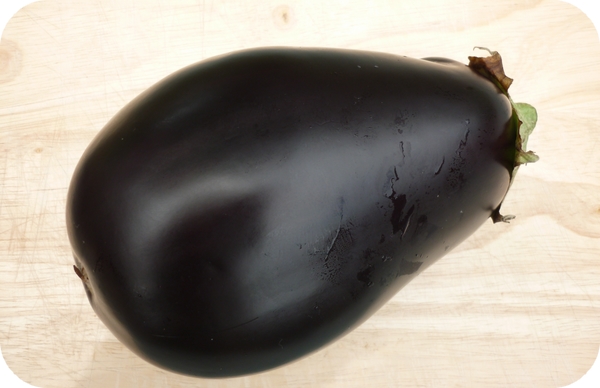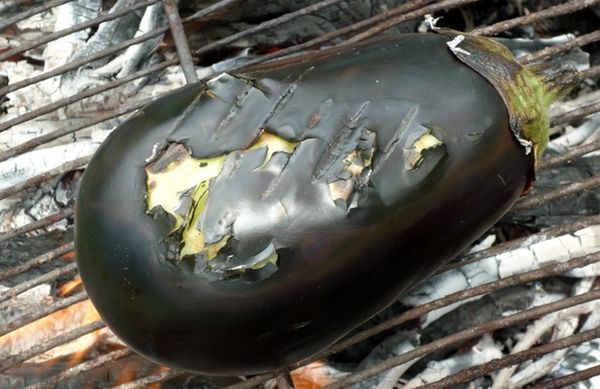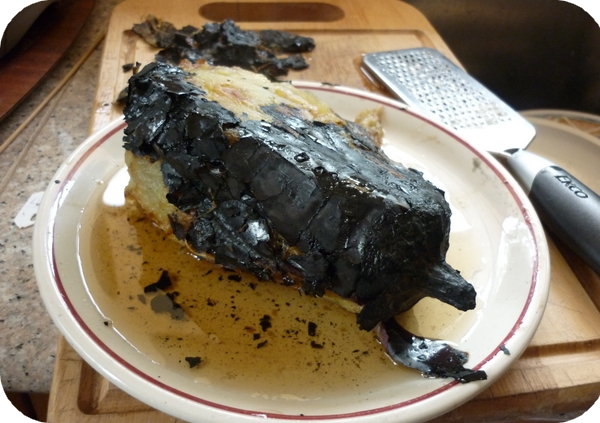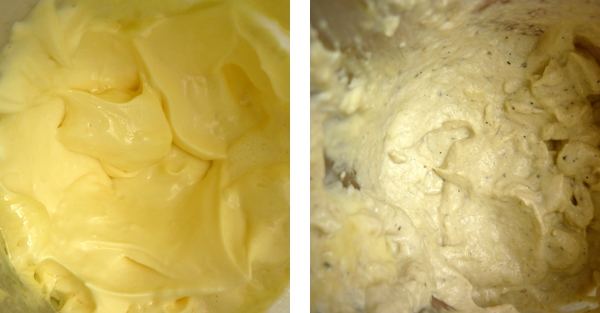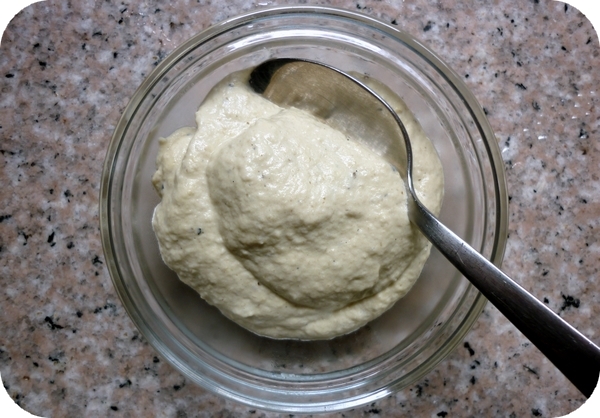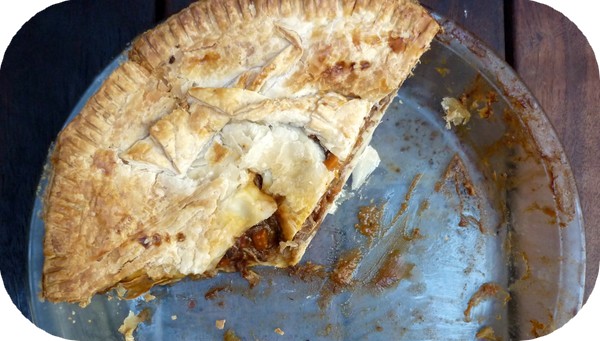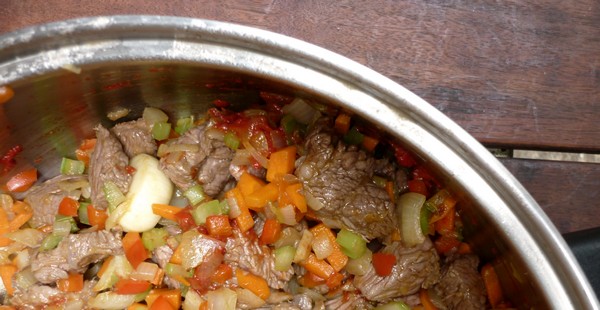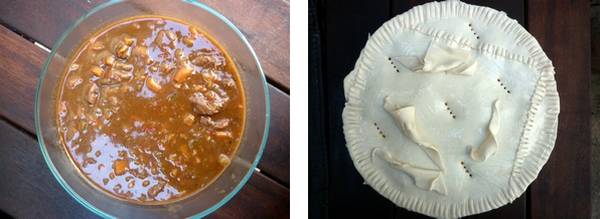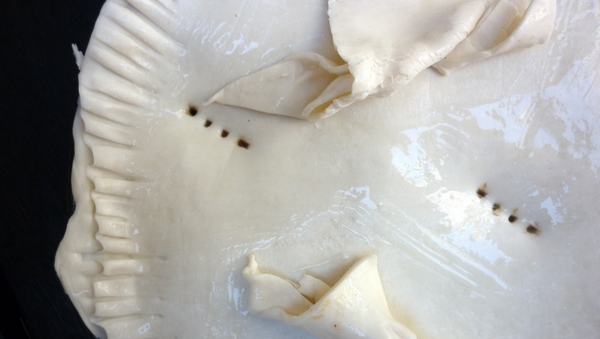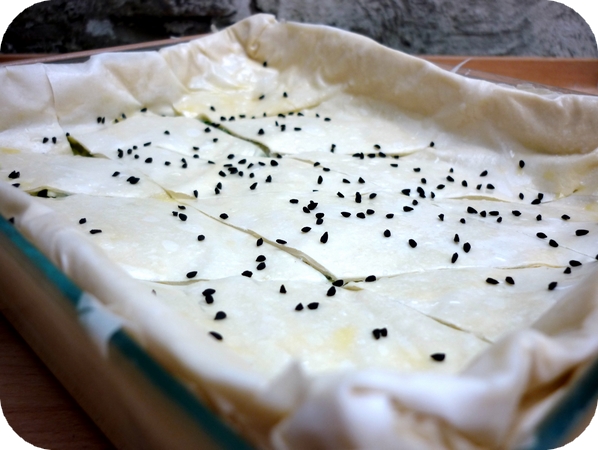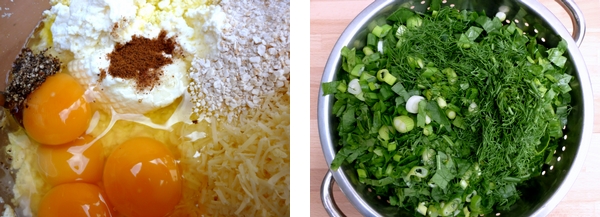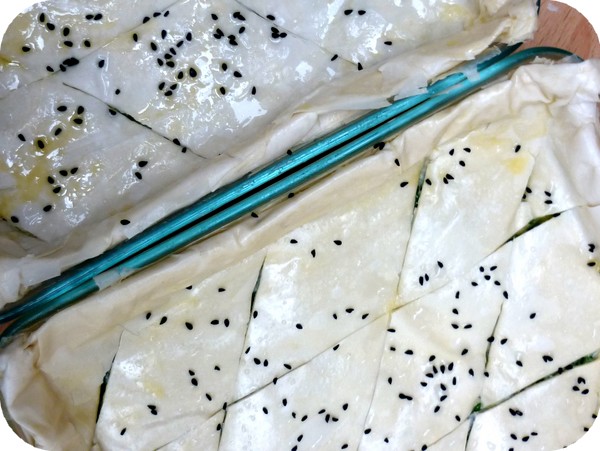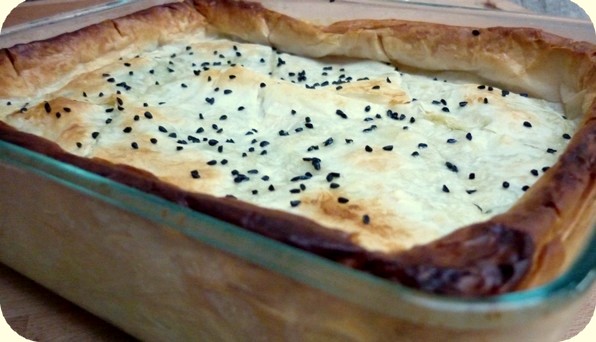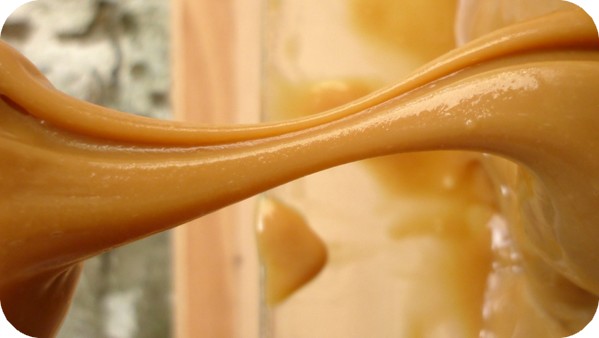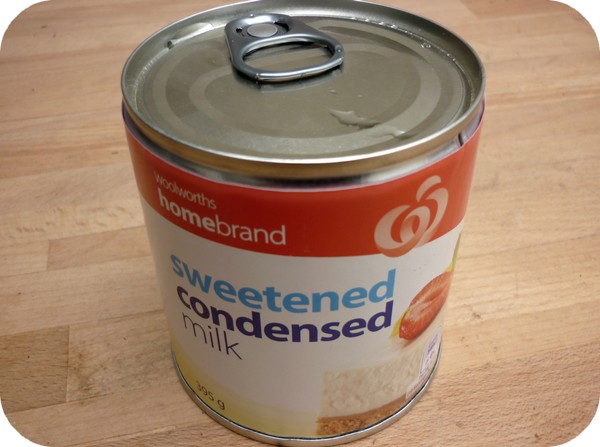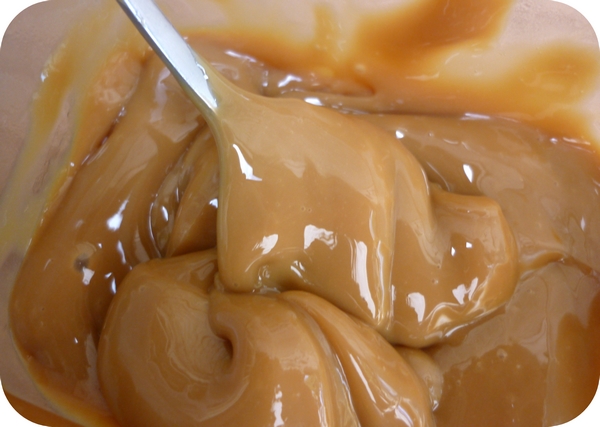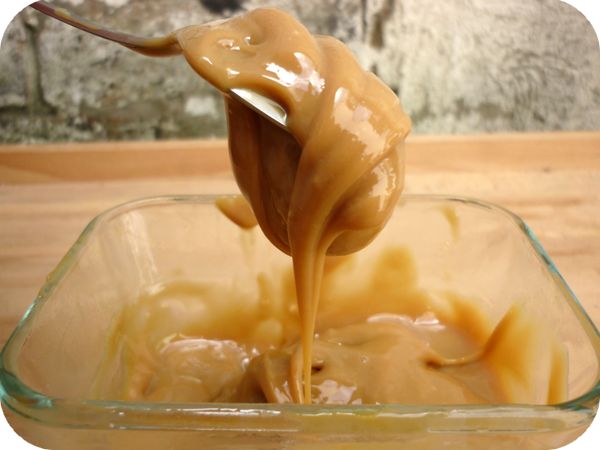Do you have a dish that’s such a staple in your repertoire that you assume you’ve already cooked it for everyone you know? One that’s renowned all over town, prepared for every special occasion? Or used to be, back in the day. ‘You’ve tried mum’s eggplant dip, haven’t you?’ my boyfriend has been asking me for the past 5 years. No. I. HAVEN’T. Ever! Until now.
I was very curious about this magical dip that made my boyfriend sigh at every other eggplant dip I’d ever seen him try. We could be eating the smokiest, most luscious baba ganouj in the world and no matter how amazing I thought it was, he’d say ‘Yeah, but it’s not as good as mum’s eggplant dip.’ Sigh. But then I’m sure we all have our family recipes that make all other versions pale in comparison in our eyes…
The worst part, especially when I was a vego, was never having tried this legendary concoction. So when I started writing Corridor Kitchen I was determined to get my boyfriend’s mum to prepare her Israeli Salat Hatzilim, made of mashed grilled eggplants, homemade mayo and garlic so that I would finally get a taste. And I’ve gotta say that it lived up to the hype.
When it was originally described to me, I don’t think I realised just what an important role the mayo would play in the overall flavour and texture or the dip. It makes it creamy and lush and the eggplant itself, grilled over open flame is smokier and more pungent than I could ever have thought possible. This dip will wow your guests and is totally worth the effort.
Salat Hatzilim
1 eggplant
1 egg yolk
Pinch salt
1/3 – ½ cup canola oil
A splash of water
1-2 Tbsp lemon juice
3-4 cloves garlic, grated
Over a fire that is starting to die down (a combination of flames and embers), cook the eggplant, turning until blackened and blistered on the outside and cooked all the way through. Alternatively, you can cook it over a gas burner like this.
Leave eggplant to cool slightly and then peel off all the skin.
Using a food processor or immersion blender (or a whisk if you want to torture yourself), puree egg yolk until creamy. Add salt and once dissolved, pour the oil, drop by drop, constantly stirring, the way you would to make aioli.
Add the garlic, lemon juice and eggplant and blend together. Serve with pita or crudités, or as part of a meal.
What’s your favourite recipe from your childhood?
There are some foods that are inextricably linked to national identity, considered representative or symbolic of a nation. As Australia post-1788 doesn’t have a long culinary history, we only have a few foods that are really seen as (almost) uniquely Australian; vegemite, the lamington, the pavlova, damper, fairy bread and the Aussie BBQ. But there is one food in particular that expats all over crave, never realising how great their love of it before they leave home- the meat pie.
Of course it’s by no means clear-cut. Food icons are not divided by national boundaries anymore than any other cultural phenomena. For example, almost all the foods that I mentioned above as ‘(almost) uniquely Australian’ are claimed by New Zealand as well. And of course food nostalgia can hit you for any tasty treat or even for foods you don’t like. They don’t even have to be linked to your history or your country. But there is definitely a strong link between national identity and food.
Although making pie from meat is by no means unique to Australia, other than New Zealand there is no other country I’ve come across where virtually everywhere you go, you can grab a pie. This isn’t to say we eat them often; I might have two pies in a whole year, but when you go overseas and you can’t just grab a pie it’s a culture shock. And that to me is the measure of an iconic food. That feeling, a kind of a mix of longing, disbelief and of course hunger when you can’t find that food you’re so used to being able to grab wherever you go. In fact, that may be why I’ll only get around to eating two meat pies in a year: I know they’ll always be there and thus take them for granted.
The pies you get at every local bakery, servo and supermarket in Australia are, like any mass-produced food, incredibly different from the kind you’d make at home. In fact, a home-made pie makes no attempt to imitate a mass-produced one, and vice versa. But they are delicious in their own way; flaky, hot and with tender beef chunks, slathered in or (god forbid) without tomato sauce. There is no wrong way to eat it and no wrong time – the Aussie beef pie suits all occasions. You could even serve one up this Australia day…
Aussie Beef Pie
500g chuck steak, diced
2 Tablespoons olive oil
2 cloves garlic, finely chopped
1 large onion, finely chopped
1 carrot, finely chopped
2 sticks celery, finely chopped
1 red capsicum, finely chopped
1 Tablespoon ground paprika
1 Tablespoon tomato paste
1 glass of wine (any kind)
1 glass of water
375ml liquid beef stock
2 bay leaves
Freshly cracked black pepper, to taste
1 cup cold water mixed with 1 Tablespoon cornflour
2 sheets frozen butter puff pastry
1 egg, lightly beaten
Tomato sauce, to serve, if desired.
In a heavy-based saucepan, heat the oil and cook the steak until sealed and browned. Transfer to a bowl.
Add the vegetables and fry until translucent, about 5 minutes. Return the beef to the pan and add the paprika and tomato paste. Stir through.
Add all the remaining ingredients except for the cornflour mixture, pastry and beaten egg. Simmer mix for 45 minutes. Stir through cornflour mixture and simmer until thick. Allow to cool and refrigerate overnight.
The next day, preheat the oven to 220 ◦c. Lightly grease a round pie dish and line with a sheet of puff pastry. Fill with the beef filling and top with a second pastry sheet. Crimp the two sheets together with a fork and cut away the excess pastry. Finally, prick some holes in the top of the pie to allow air to escape and brush the top with beaten egg.
Bake for 45 minutes or until top and bottom of pie are golden (it helps to use a Pyrex dish so you can see this happening). If the pie browns too quickly on top, cover with foil.
Allow the pie to cool for 10 minutes or so before cutting and serving with tomato sauce and any veg you prefer. For me, it steamed green beans and mashed potato. Enjoy!
What foods represent your national identity?
In Argentina I met an English girl who said that Australia was the first place she ever tried Greek Yogurt. What’s more, she hadn’t had it since. She said she couldn’t wait to get back here to eat Greek yogurt every day! Frankly, I don’t blame her. It’s rich, creamy and tart with the thick lusciousness of sour cream- there’s nothing like it.
The availability of Greek food in Australia is not at all surprising when you consider the number of immigrants and their descendants living in here – Melbourne, for example, is the city with the second largest Greek population in the world. There is a large Greek population in Sydney as well, and a myriad of restaurants and ingredients available very easily if you’re interested in cooking Greek food. This is one of the major benefits of living in this country- diversity of food. You’re hard pressed to find a town where you can’t find a veggie burger or a machiatto or, in my friend’s case, Greek yogurt. This is something that we now take for granted and in many cases, never give a second thought.
It is also one of the major ways people understand multiculturalism. Food is a valuable way for different communities to promote their cultures, as everybody eats and it is considered a starting point for greater familiarity with a culture to experience their food. Of course, it is also only the tip of the iceburg- 20 kinds of cuisine in one place does not a multicultural society make. That’s what we call a food court. I love this recipe for it’s simplicity and the burst of flavour provided by the dill. It is best eaten fresh from the oven, crispy and golden but also makes a brilliant cold lunch if you have any leftovers.
Never fail Spanikopita by Dimitra Alfred, via the SBS Food Safari website
2 bunches English spinach (300g or so)
4 sprigs fresh dill, chopped
4 spring onions, chopped
300g feta cheese
100g ricotta cheese
50g (½ cup) finely grated hard cheese like kefalograviera (I used Pecorino)
5 eggs
2 tbsp dry breadcrumbs (I used matzo meal as I had no bread crumbs on hand)
¼ tsp ground nutmeg
½ tsp freshly ground black pepper
60ml olive oil (4 Tablespoons)
375g packet fresh fillo pastry
Around ¾ cup melted butter
Sesame or nigella seeds, for sprinkling over the top.
Chop the spinach, dill and spring onions very finely. Rinse in a large colander and leave to drain.
Place the feta in a large bowl and mash coarsely (I use a fork). Add the ricotta, hard cheese, eggs, breadcrumbs, nutmeg, pepper and oil. Mix with the fork to combine. Add the spinach.
Preheat oven to 180C. Lightly grease a 20cm x 30cm x 5cm deep baking dish or, as I did, two pyrex 6-cup rectangular dishes. Lay the fillo out on a bench. Cover with a damp tea towel to keep it from drying out.
Line dish with a sheet of filo and butter the filo with a pastry brush. Continue layering until about half the sheets of fillo are used (6 to 8). I cut the filo in half with scissors as I was using two dishes.
Using your hands, gently mix the spinach filling into the cheeses until thoroughly combined. Pour into the prepared pastry base and spread evenly.
Top with remaining filo, buttering each sheet, ensuring the final sheet is well buttered. Trim any overhanging pastry and tuck in.
Use a sharp knife to mark pastry top into diamonds, allowing the knife to pierce the pastry once or twice to allow air to escape during baking. Sprinkle lightly with water, sesame seeds and a few nigella seeds and bake in preheated oven for 45 minutes to 1 hour or until well browned and set.
Gently shake the pan and the spanakopita will slide easily when cooked. Cool on rack for 15 minutes before cutting to serve.
Are there any delicious treats you miss from your overseas adventures?
It’s no secret to anyone who knows me that I have a very sweet tooth. So imagine my delight at every hostel I stayed at in Argentina and Uruguay when each breakfast came complete with dulce de leche, the classic spreadable caramel that is liberally dolloped on desserts, cakes and even toast. No matter how dodgy the coffee, how tepid the ‘orange fruit drink’ or how stale the bread, there was always dulce de leche to smother it and more than compensate. My favourite way to eat it was as ‘Flan con dulce’, basically a crème caramel slathered in the stuff. Heaven.
It’s quite the trendy condiment these days and I’ve gotta say I’m glad of it. If you’re craving alfajores de maicena, those delicious cornflour-based biscuits sandwiched together with thick dulce de leche and rolled sparingly in caramel, you could make them yourself, and no doubt I will at some point. But if you can’t be bothered, don’t worry as Argentinian cake shops are popping up all over Sydney, from La Paula in Kingsford to Baker Street in Ultimo to Sugarloaf Patisserie in Kogarah.
You’ve probably heard of this cheat’s version of dulce de leche, and I have to admit it’s not quite as good as the real thing, either homemade or mass produced. The traditional way of making it involves boiling and stirring a litre of milk with sugar until you reach the point of thick caramel deliciousness. However, the cheat’s version yields an acceptable result, and when you consider how little effort goes into it.
Cheat’s Dulce de Leche
As many tins of sweetened condensed milk as you want dulce de leche
¼ teaspoon vanilla extract per tin (if desired)
Put the tins of sweetened condensed milk into a large pot. Boil enough water to more than cover the tins. Place the pot on the stove and pour the boiling water over the cans. Bring to the boil.
Once the water is boiling, turn the heat down to a simmer. Simmer for 2-3 hours, making sure the tins are completely covered with water at all times as there is a chance they could explode.
Leave the tins to cool in the pot for an hour or more. Empty each tin into an airtight container and stir through the vanilla if using. Serve on everything!
So, do you have a food that you’re craving from overseas?
About me
 Sharing easy recipes, hunting down the best coffee. Honest accounts, nothing too serious. Read more...
Sharing easy recipes, hunting down the best coffee. Honest accounts, nothing too serious. Read more...Recent Posts
- Aerpress means no more shit #travelcoffee and #workcoffee
- Why I write and four ace bloggers who do it better
- The five best things I ate in London
- Shoreditch is awesome, airports are not
- I quit sugar? Do I bollocks.
- Cubao Street Food, Alexandria
- The Reformatory Caffeine Lab, Surry Hills
- Brewtown Newtown
- Stay caffeinated over Christmas
- Gumption by Coffee Alchemy, Sydney CBD
Popular posts this month…
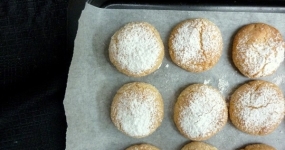 Amaretti – The no-fuss treat posted on November 18, 2010
Amaretti – The no-fuss treat posted on November 18, 2010 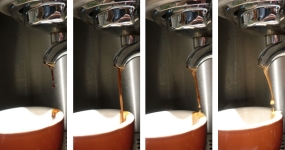 5 tips for perfect espresso posted on November 23, 2010
5 tips for perfect espresso posted on November 23, 2010  Boysenberry Banana Sorbet posted on November 26, 2010
Boysenberry Banana Sorbet posted on November 26, 2010 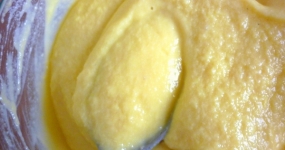 Rich Portuguese Custard posted on November 29, 2010
Rich Portuguese Custard posted on November 29, 2010 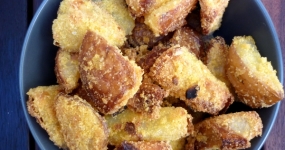 Desert Island Potatos posted on December 3, 2010
Desert Island Potatos posted on December 3, 2010 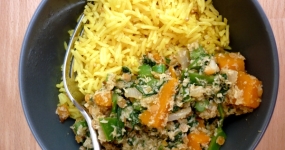 Sri Lankan Spinach with Coconut posted on December 10, 2010
Sri Lankan Spinach with Coconut posted on December 10, 2010 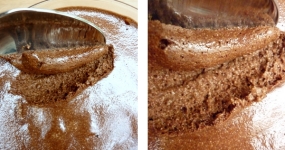 Mousse Chocolate and other peoples’ families posted on December 15, 2010
Mousse Chocolate and other peoples’ families posted on December 15, 2010 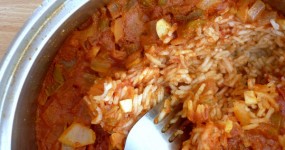 The quest for Mex part 1 – Mexican Red Rice posted on December 17, 2010
The quest for Mex part 1 – Mexican Red Rice posted on December 17, 2010
Disclaimer:
All opinions in this blog are mine, an everyday, real-life person. I do not accept payment for reviews and nor do I write sponsored posts. I do not endorse the content of the comments herein.

